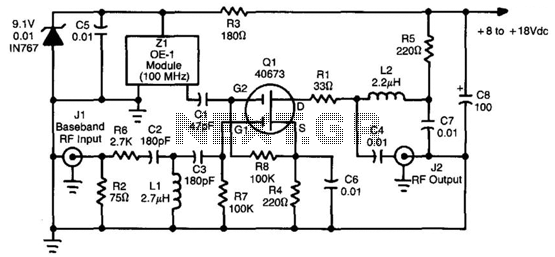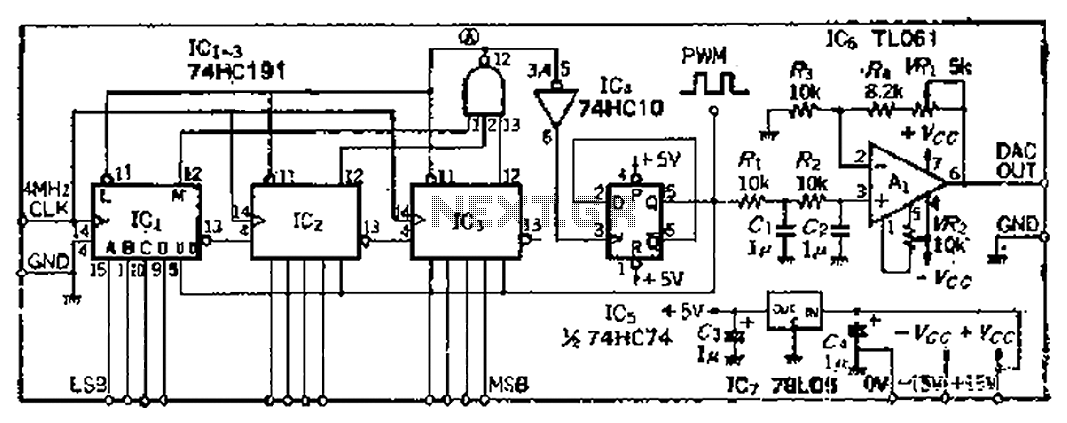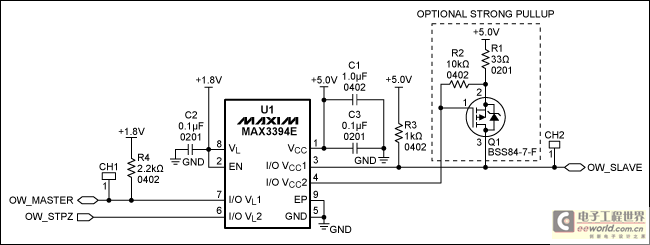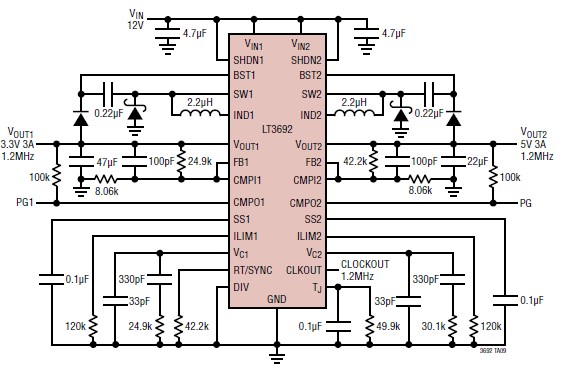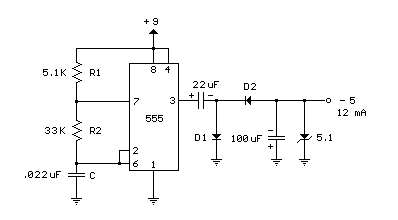
Digital-to-analog converter (DAC)
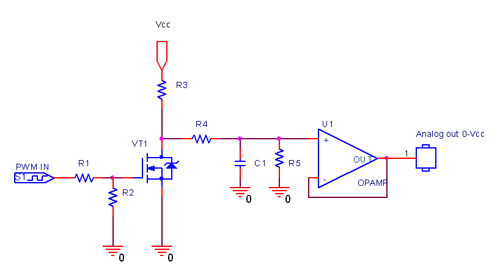
In electronics, a digital-to-analog converter (DAC or D-to-A) is a device that converts a digital code, typically in binary format, into an analog signal, which can be in the form of current, voltage, or electric charge. DACs are utilized for testing circuits and amplifiers or for generating complex signals. The implementation of a DAC can be achieved through Pulse Width Modulation (PWM). The accompanying figure illustrates three PWM signals with varying duty cycles. The duty cycle represents the ratio of the positive pulse width to the total period. The PWM waveforms depicted exhibit duty cycles of 33%, 50%, and 75%. Each of these PWM signals can be translated into corresponding analog values, specifically at 33%, 50%, and 75% of the maximum output strength. For example, when the voltage level is set to 5V, a duty cycle of 50% results in the DAC outputting 2.5V. The PWM interface of DLN-series PC-I2C/SPI/GPIO Adapters can be employed to implement a diverse range of digital-to-analog converters, which can be conveniently controlled via PC software. The DLN-series USB-I2C/SPI/GPIO adapters feature both high-frequency and low-frequency PWM controllers, with high-frequency PWM (HPWM) being more suitable for DAC control.
In the context of electronic circuit design, a digital-to-analog converter (DAC) plays a crucial role in bridging the digital world with the analog domain. The conversion process typically involves interpreting binary input values and translating them into corresponding voltage or current outputs. The use of Pulse Width Modulation (PWM) as a method for DAC implementation is particularly advantageous due to its simplicity and efficiency. PWM operates by varying the width of the pulses in a signal, which allows for precise control over the average voltage delivered to the load.
The duty cycle of a PWM signal is a critical parameter that defines the ratio of the time the signal is high (on) to the total period of the signal. For instance, a PWM signal with a 50% duty cycle will have equal time spent in the high and low states, effectively averaging out to half the supply voltage at the output. This characteristic makes PWM an effective method for generating analog signals from digital inputs, as it allows for the easy adjustment of output levels by modifying the duty cycle.
In practical applications, the DLN-series PC-I2C/SPI/GPIO Adapters provide a versatile platform for controlling DACs. These adapters enable users to interface with various types of DACs using standard communication protocols such as I2C or SPI, facilitating the integration of digital control with analog output. The availability of both high-frequency and low-frequency PWM controllers within these adapters enhances their utility, allowing for optimal performance across different applications. High-frequency PWM is particularly beneficial for DAC control as it minimizes the ripple in the output signal, resulting in smoother and more accurate analog outputs.
In summary, the combination of digital-to-analog conversion through PWM, along with the capabilities provided by the DLN-series adapters, allows for the effective generation of analog signals from digital sources, making it an essential component in modern electronic systems.In electronics, a digital-to-analog converter (DAC or D-to-A) is a device for converting a digital (usually binary) code to an analog signal (current, voltage or electric charge). You can use DAC for testing circuits and amplifiers or for generating the high complexity signals. Digital to analog converter can be easily implemented with Pulse Width Modulation (PWM). On the following figure you can see three PWM signals with different duty cycles. The duty cycle describes the proportion of positive pulse width to the period. PWM waveforms with 33%, 50% and 75% of duty cycle are shown below. These three PWM signals can be converted to three different analog values, at 33%, 50%, and 75% of the full strength. For instance, when the voltage level is 5V and the duty cycle is 50%, digital to analog converter outputs 2.
5V. You can use PWM interface of DLN-series PC-I2C/SPI/GPIO Adapters to implement wide variety of digital to analog converters. These converters can be easily controlled from PC SW. DLN-series USB-I2C/SPI/GPIO adapters has both high-frequency and low-frequency PWM controllers. The high-frequency PWM (HPWM) suits better for DAC controlling. 🔗 External reference
In the context of electronic circuit design, a digital-to-analog converter (DAC) plays a crucial role in bridging the digital world with the analog domain. The conversion process typically involves interpreting binary input values and translating them into corresponding voltage or current outputs. The use of Pulse Width Modulation (PWM) as a method for DAC implementation is particularly advantageous due to its simplicity and efficiency. PWM operates by varying the width of the pulses in a signal, which allows for precise control over the average voltage delivered to the load.
The duty cycle of a PWM signal is a critical parameter that defines the ratio of the time the signal is high (on) to the total period of the signal. For instance, a PWM signal with a 50% duty cycle will have equal time spent in the high and low states, effectively averaging out to half the supply voltage at the output. This characteristic makes PWM an effective method for generating analog signals from digital inputs, as it allows for the easy adjustment of output levels by modifying the duty cycle.
In practical applications, the DLN-series PC-I2C/SPI/GPIO Adapters provide a versatile platform for controlling DACs. These adapters enable users to interface with various types of DACs using standard communication protocols such as I2C or SPI, facilitating the integration of digital control with analog output. The availability of both high-frequency and low-frequency PWM controllers within these adapters enhances their utility, allowing for optimal performance across different applications. High-frequency PWM is particularly beneficial for DAC control as it minimizes the ripple in the output signal, resulting in smoother and more accurate analog outputs.
In summary, the combination of digital-to-analog conversion through PWM, along with the capabilities provided by the DLN-series adapters, allows for the effective generation of analog signals from digital sources, making it an essential component in modern electronic systems.In electronics, a digital-to-analog converter (DAC or D-to-A) is a device for converting a digital (usually binary) code to an analog signal (current, voltage or electric charge). You can use DAC for testing circuits and amplifiers or for generating the high complexity signals. Digital to analog converter can be easily implemented with Pulse Width Modulation (PWM). On the following figure you can see three PWM signals with different duty cycles. The duty cycle describes the proportion of positive pulse width to the period. PWM waveforms with 33%, 50% and 75% of duty cycle are shown below. These three PWM signals can be converted to three different analog values, at 33%, 50%, and 75% of the full strength. For instance, when the voltage level is 5V and the duty cycle is 50%, digital to analog converter outputs 2.
5V. You can use PWM interface of DLN-series PC-I2C/SPI/GPIO Adapters to implement wide variety of digital to analog converters. These converters can be easily controlled from PC SW. DLN-series USB-I2C/SPI/GPIO adapters has both high-frequency and low-frequency PWM controllers. The high-frequency PWM (HPWM) suits better for DAC controlling. 🔗 External reference

